Abstract
About 1% of children are born with a serious disorder which is the direct result of a mutational event in a parent or a more distant ancestor. These disorders, of which several thousand are known, mainly afflict the blood, bone, brain, ear, eye or muscle and the changes are usually irrevocable by the time of diagnosis. Another 1% of individuals will develop a serious genetic disease some time after birth. In addition to these direct consequences of a mutant event, far higher proportions will suffer from the indirect effects of one or several mutations.
In view of their chronic and severe nature most of these disorders impose a burden disproportionate to their frequency, and it is sound public health policy to avoid the birth of babies known to have the established mutations and prevent further cases in the immediate or distant future by minimizing the exposure of people at risk to known mutagens. The advantages in permitting certain mutagenic exposures must be assessed against the later costs.
Owing to the natural mutation rate and the vast backlog of previous mutations, the prospects of prevention are limited to preventing an increase, rather than to achieving any substantial decrease. This Memorandum describes progress in the ability to dissect and interpret the mutational process, to identify populations at risk, and to evaluate the consequences of the various types of mutational event and emphasizes that the current approach to prevention of mutational disease must involve improving our ability to study populations that appear to be at increased risk.
Full text
PDF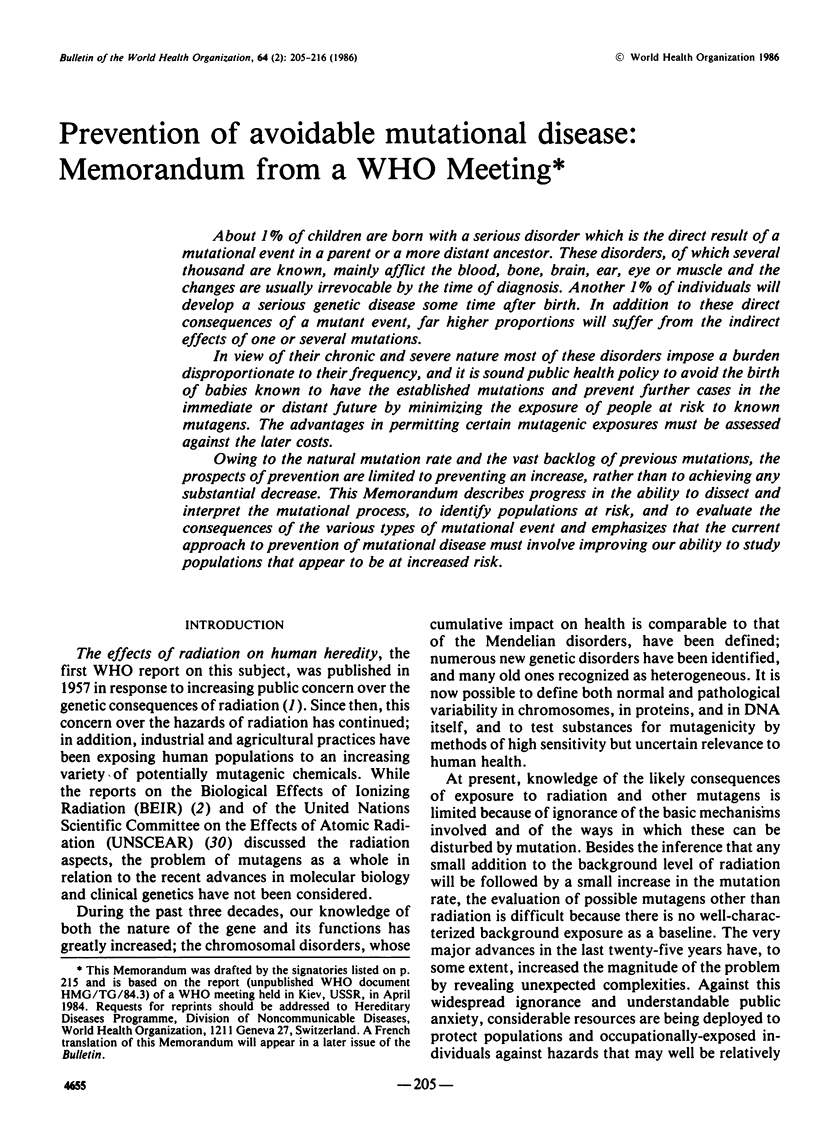
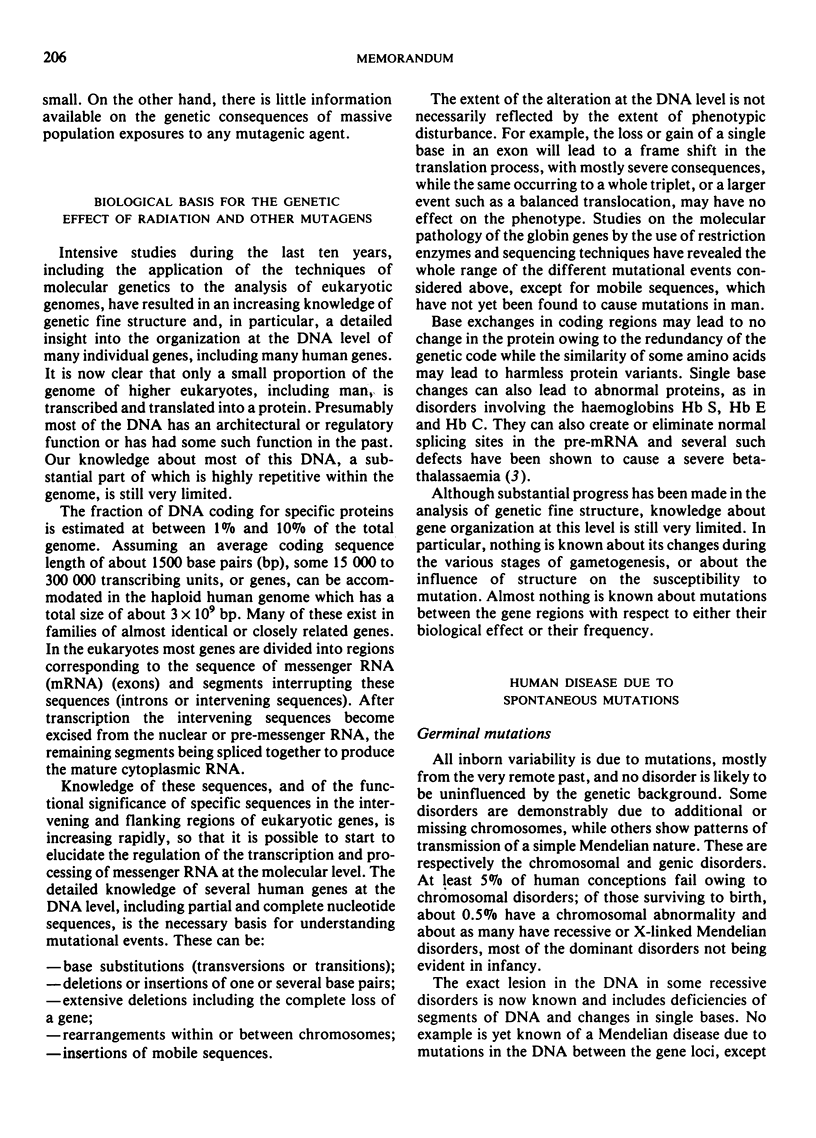
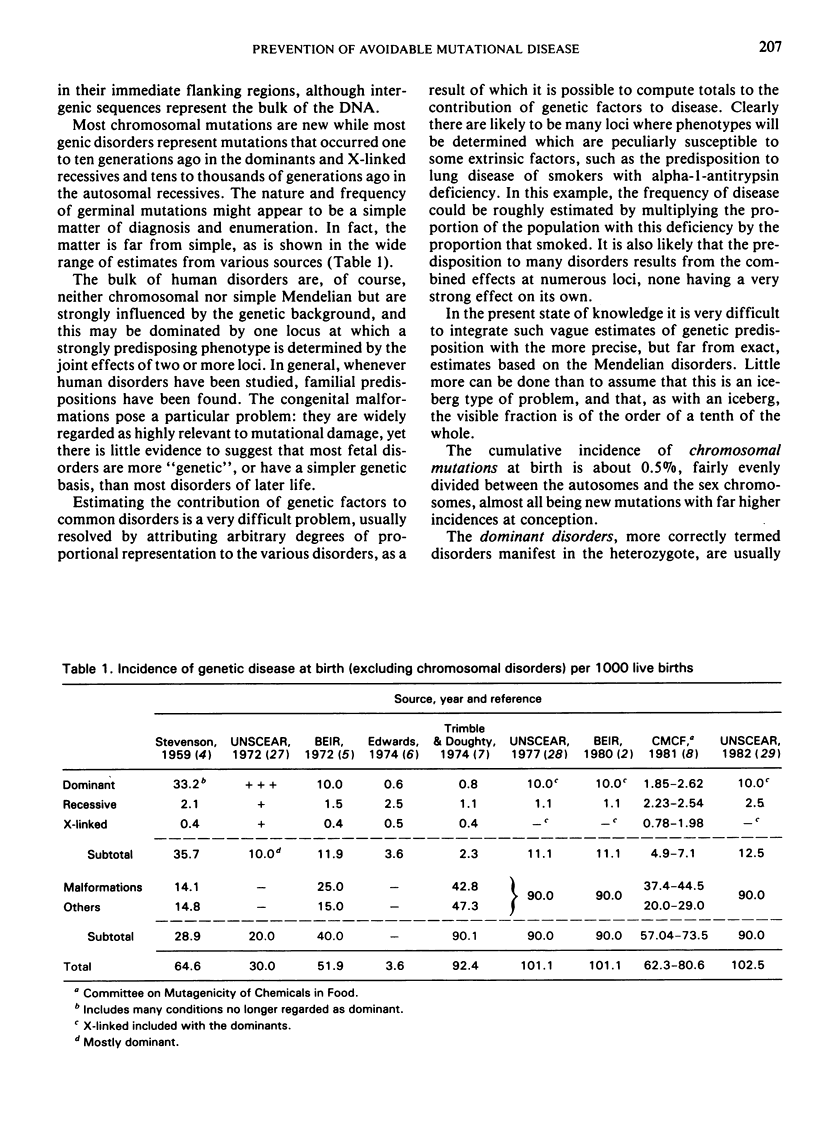
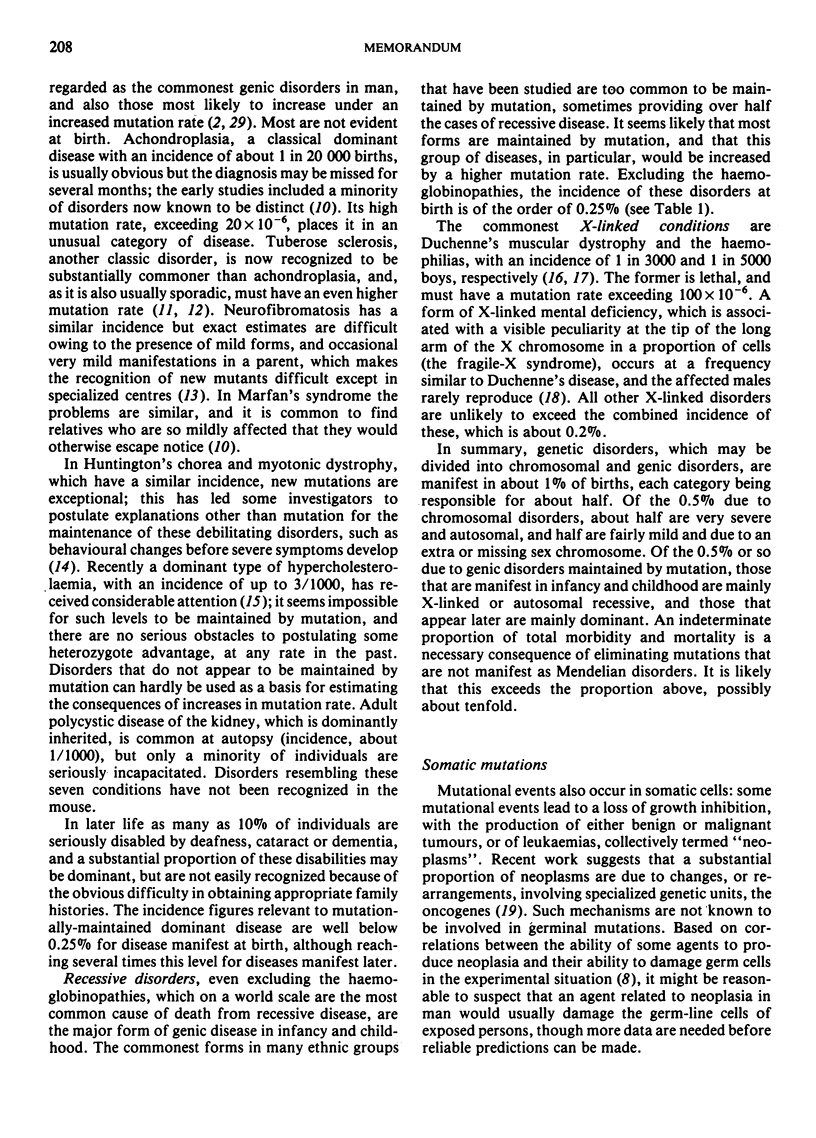
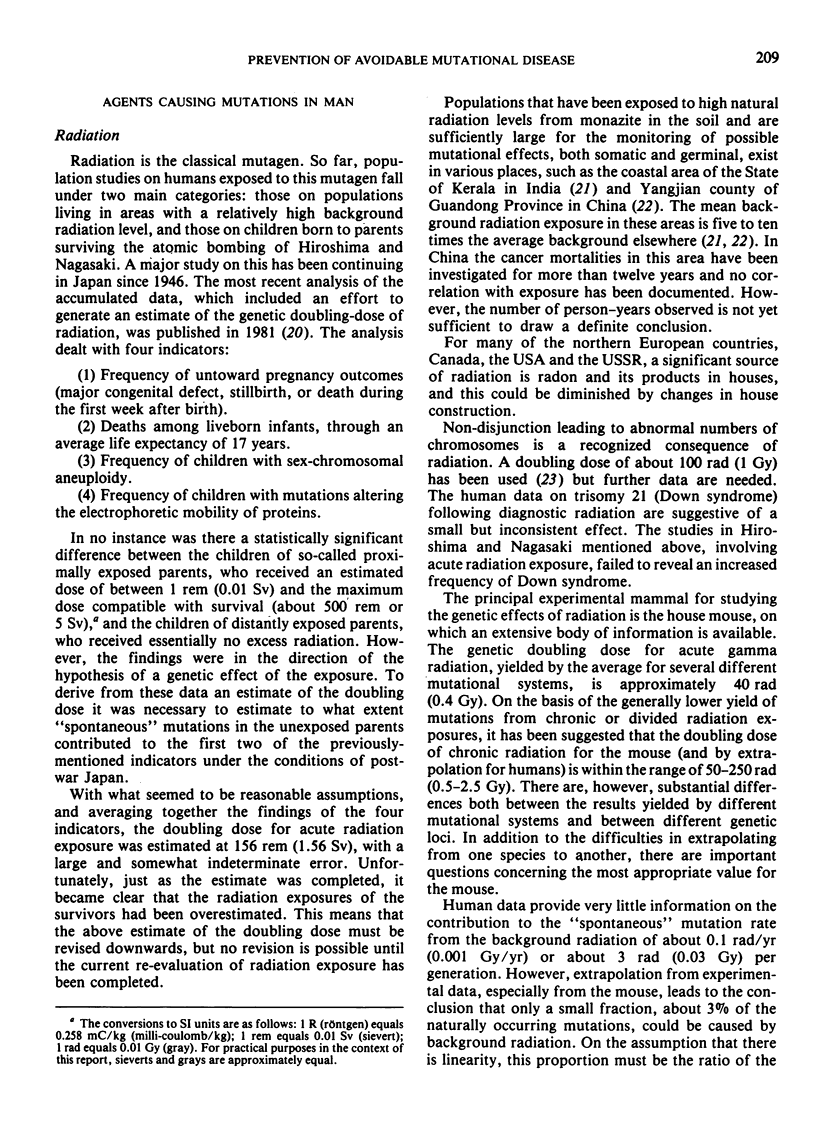
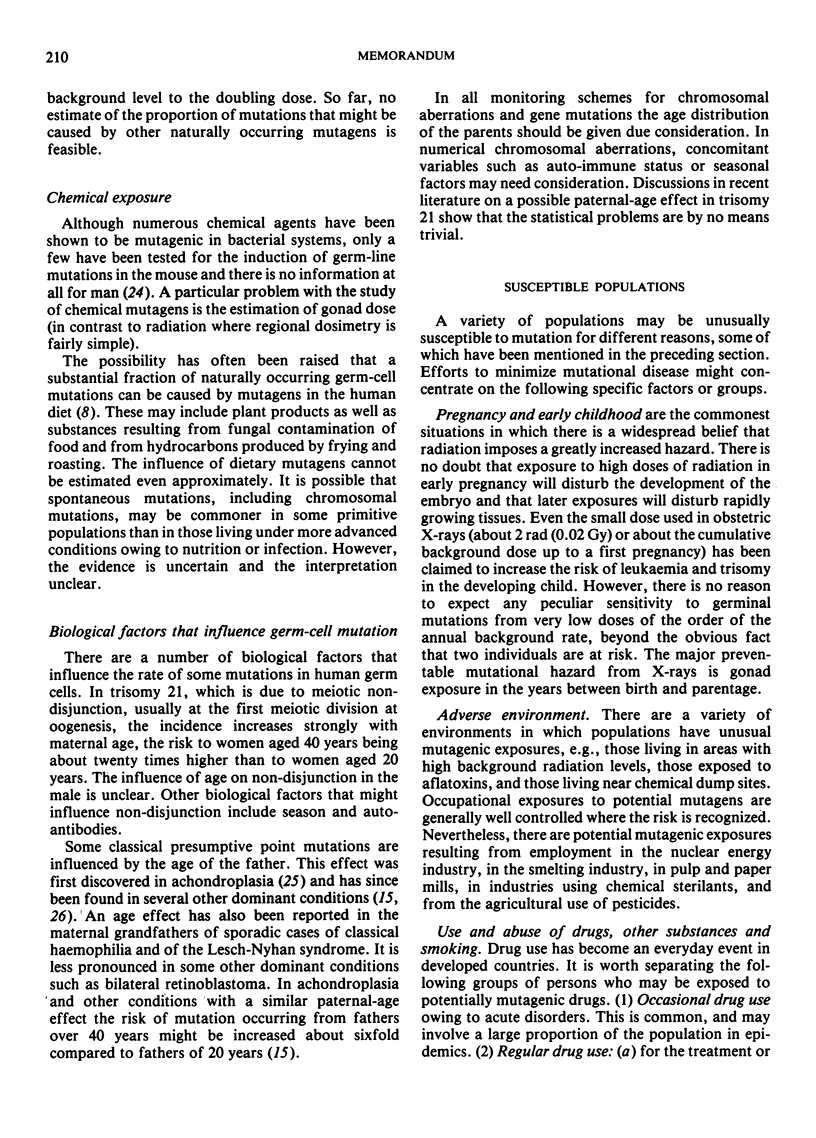
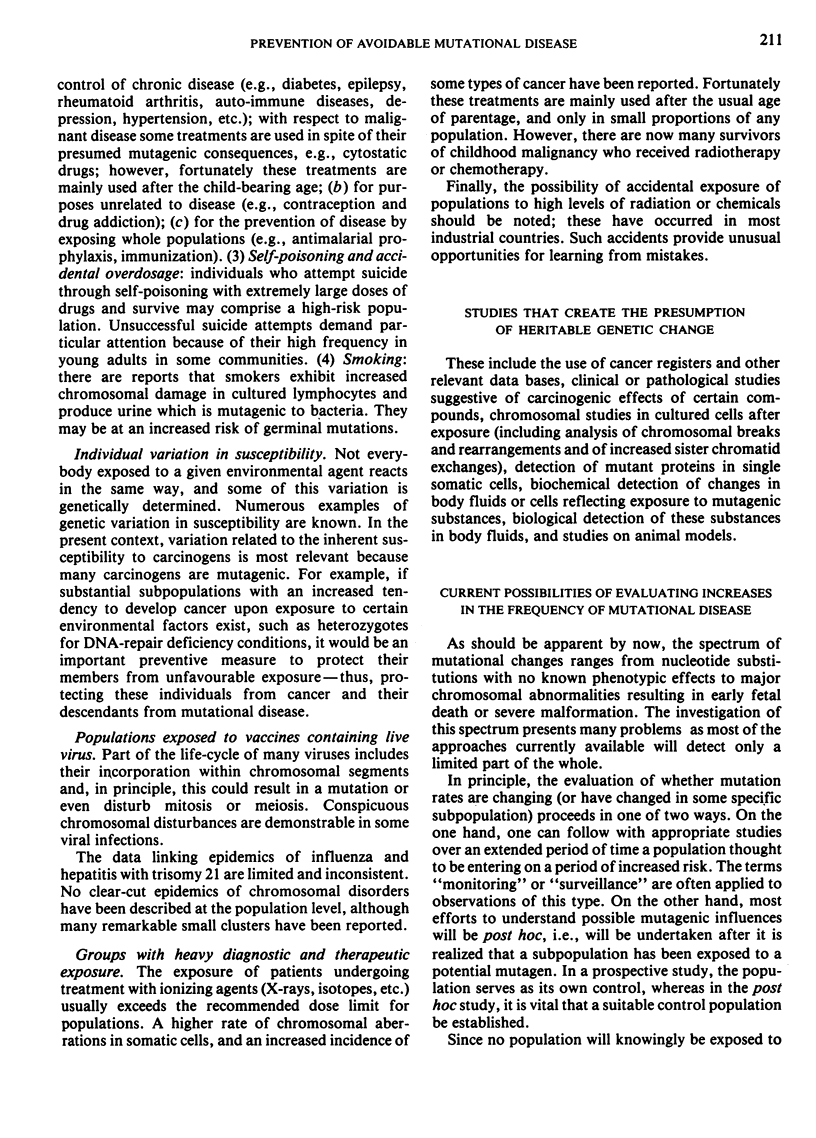
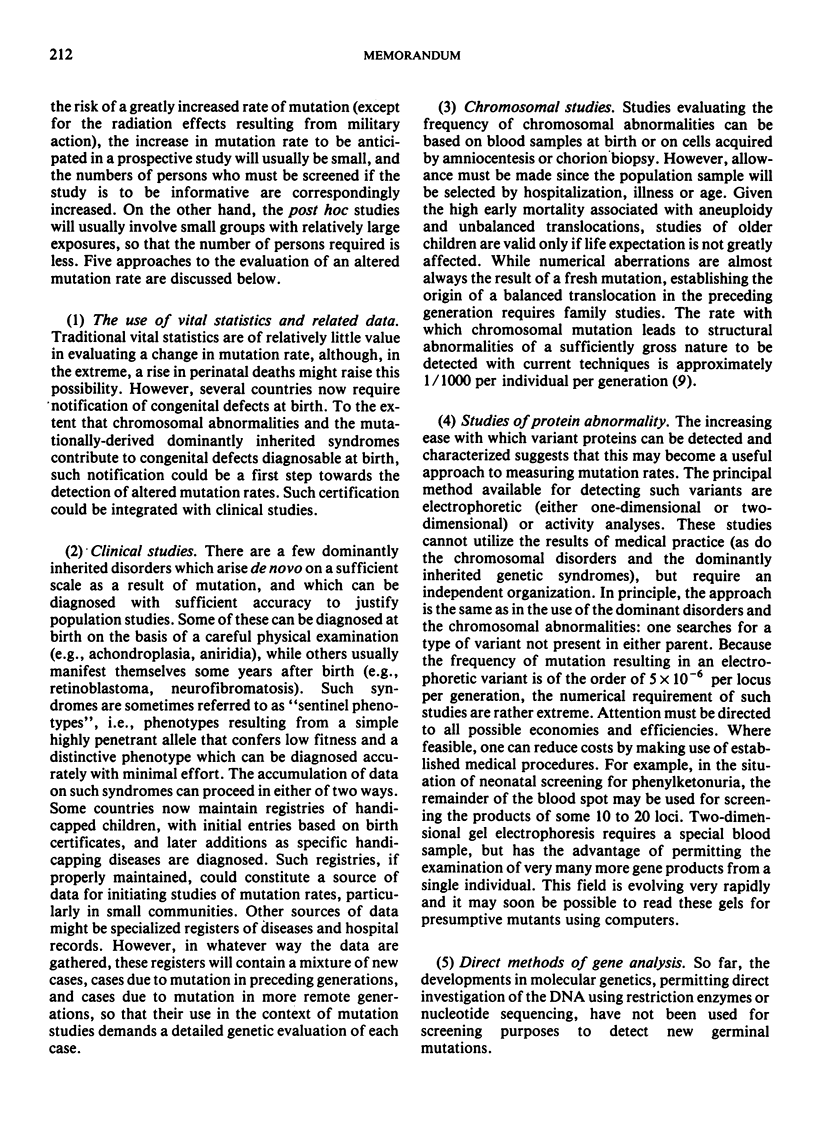
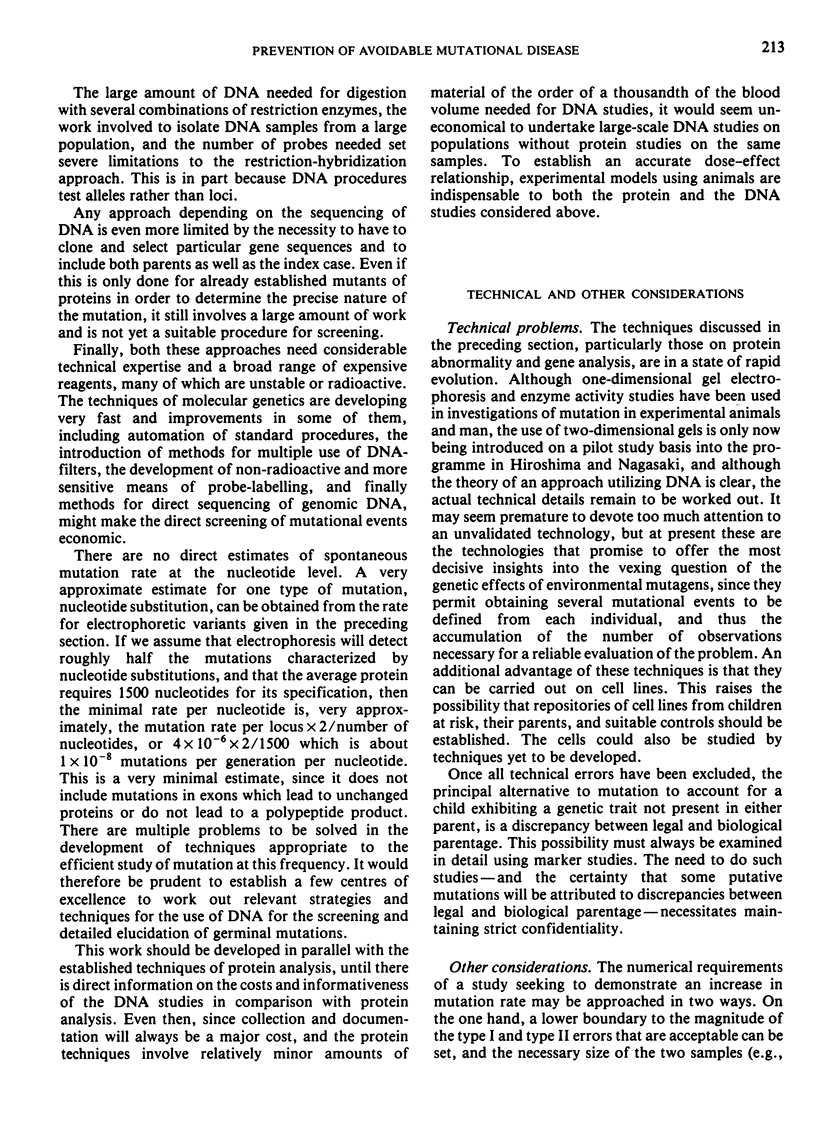
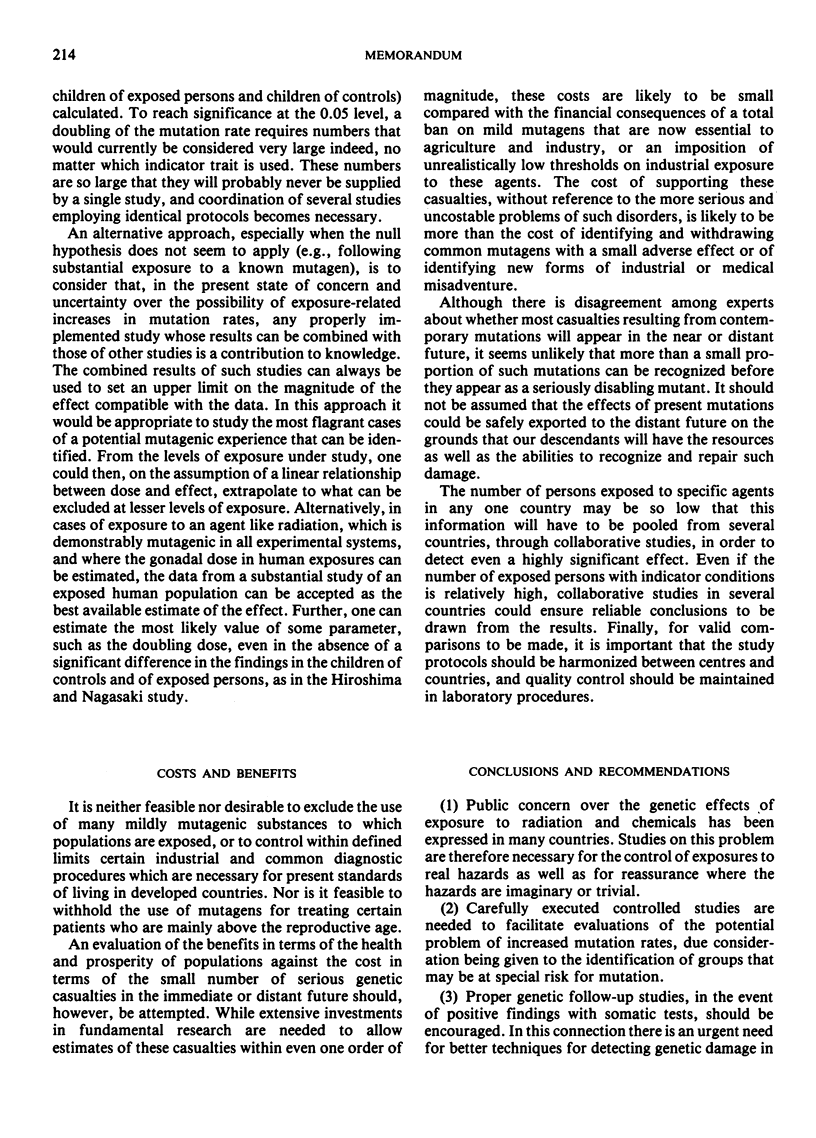
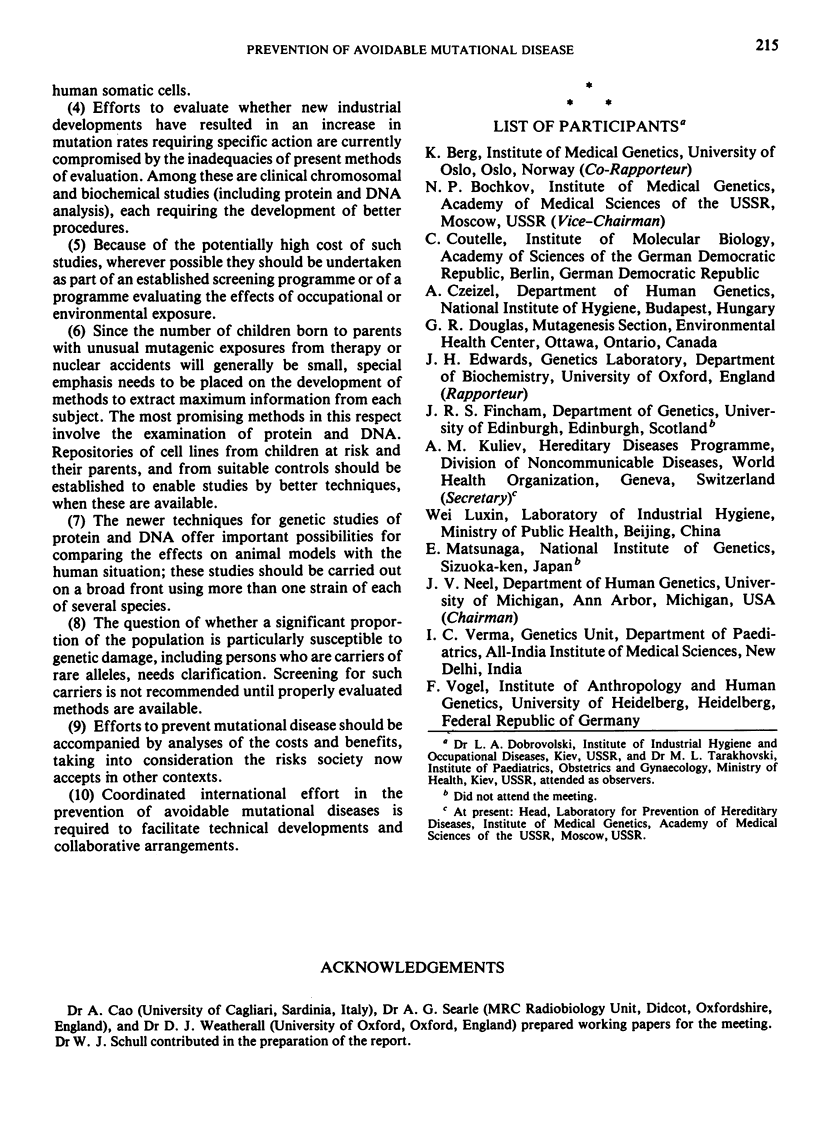
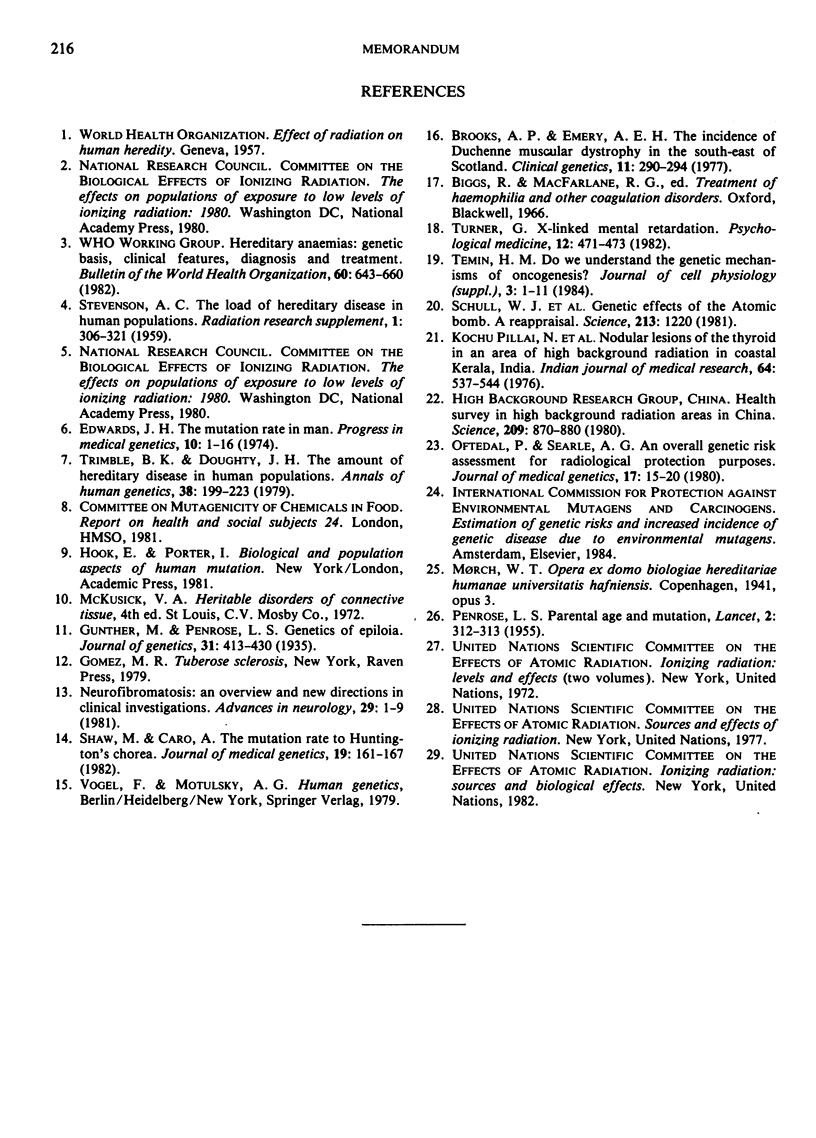
Selected References
These references are in PubMed. This may not be the complete list of references from this article.
- Brooks A. P., Emery A. E. The incidence of Duchenne muscular dystrophy in the South East of Scotland. Clin Genet. 1977 Apr;11(4):290–294. doi: 10.1111/j.1399-0004.1977.tb01315.x. [DOI] [PubMed] [Google Scholar]
- Edwards J. H. The mutation rate in man. Prog Med Genet. 1974;10:1–16. [PubMed] [Google Scholar]
- Oftedal P., Searle A. G. An overall genetic risk assessment for radiological protection purposes. J Med Genet. 1980 Feb;17(1):15–20. doi: 10.1136/jmg.17.1.15. [DOI] [PMC free article] [PubMed] [Google Scholar]
- Pillai N. K., Thangavelu M., Ramalingaswami V. Nodular lesions of the thyroid in an area of high background radiation in coastal Kerala, India. Indian J Med Res. 1976 Apr;64(4):537–544. [PubMed] [Google Scholar]
- Schull W. J., Otake M., Neel J. V. Genetic effects of the atomic bombs: a reappraisal. Science. 1981 Sep 11;213(4513):1220–1227. doi: 10.1126/science.7268429. [DOI] [PubMed] [Google Scholar]
- Shaw M., Caro A. The mutation rate to Huntington's chorea. J Med Genet. 1982 Jun;19(3):161–167. doi: 10.1136/jmg.19.3.161. [DOI] [PMC free article] [PubMed] [Google Scholar]
- Trimble B. K., Doughty J. H. The amount of hereditary disease in human populations. Ann Hum Genet. 1974 Oct;38(2):199–223. doi: 10.1111/j.1469-1809.1974.tb01951.x. [DOI] [PubMed] [Google Scholar]
- Turner G. X-linked mental retardation. Psychol Med. 1982 Aug;12(3):471–473. doi: 10.1017/s0033291700055574. [DOI] [PubMed] [Google Scholar]


